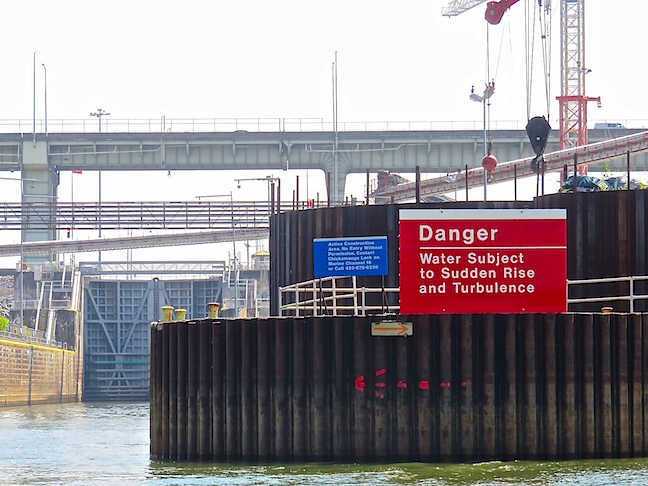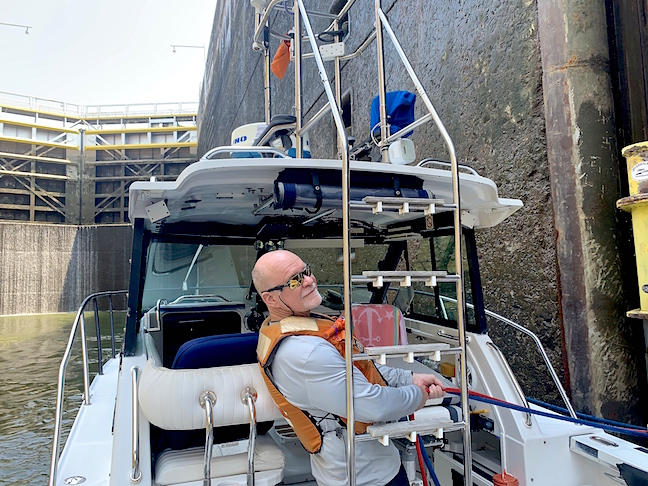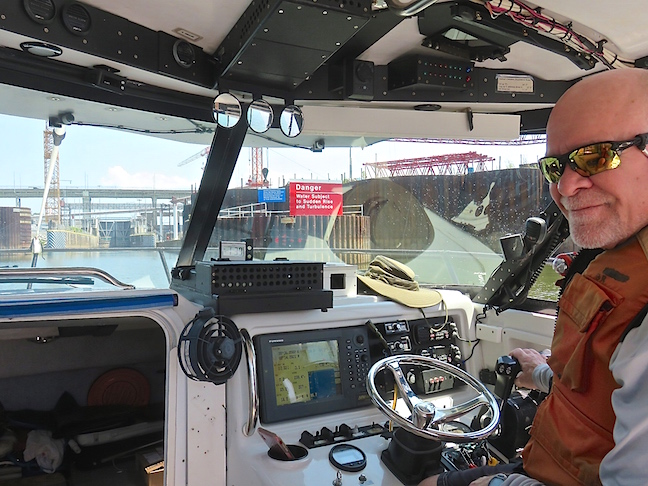Chickamauga Dam and Lock were built in the late ’30s with “Growing Concrete” made from alkali aggregate. In 1997, 2008 and 2021 a 5/8-inch slot, 38-feet wide and 107-feet deep was cut completely through the dam from top to bottom for expansion. The “Growing Concrete” causes the massive blocks that form the Chickamauga Lock to grow unevenly and shed huge chunks. A new 110-feet X 600-feet Lock is under construction to replace the old 60-feet X 360-feet, crumbling structure.
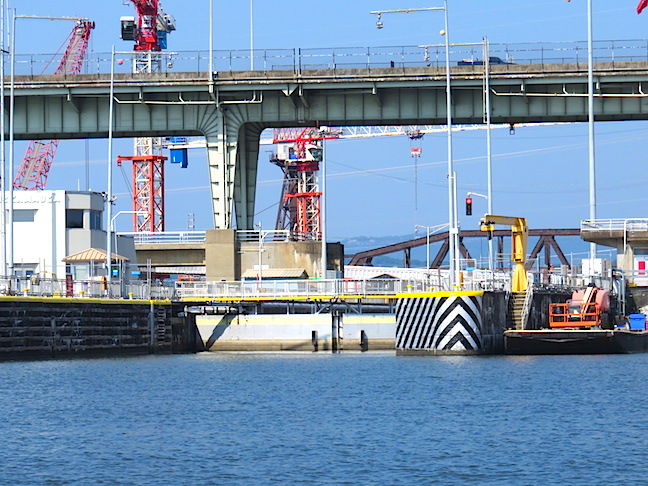
Monday (8-23-21) Karen and I locked through the Chickamauga Dam from our home port on Chickamauga Lake. The expanding concrete has not doomed the dam, but the old lock must go.
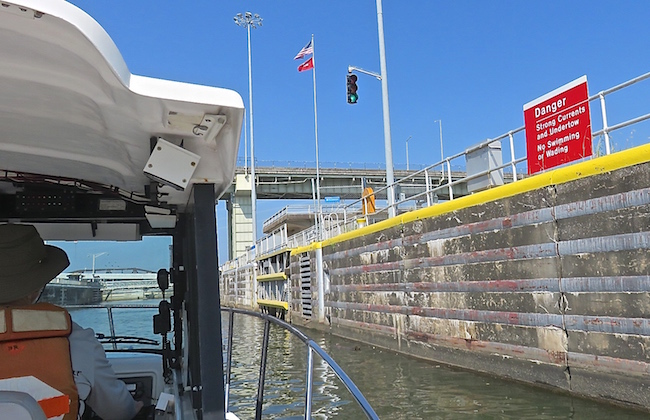
Chickamauga Lock is the second busiest lock for recreation boaters in the entire Ohio River system. Fortunately, we had the lock all to ourselves.
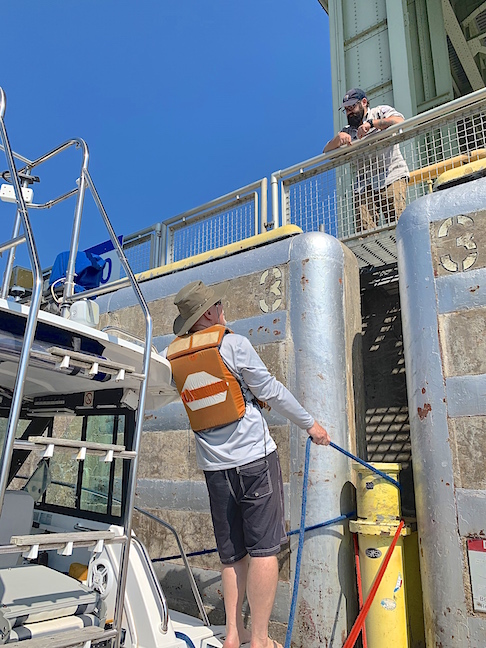
The Chickamauga Lock Operator walked all the way around the structure to talk with me. “Uh, oh.” Turned out, he just wanted to chat, get a closer look at my boat, see where we were headed and tell me about the local procedures for locking through. He could not have been nicer.
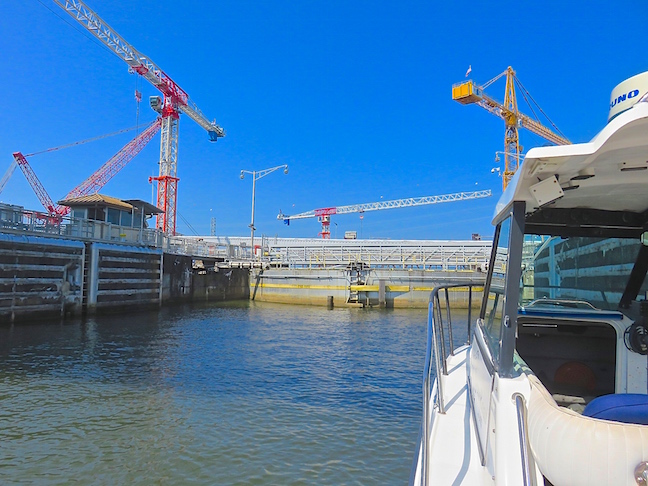
TVA completed the lock in 1939 and the U.S. Army Corps of Engineers operate it. “Locking through” is free and takes 45-minutes to an hour for a recreational boat. Only one barge can fit at a time, so a string of four to six barges would have to be uncoupled, each barge passed through and reassembled on the other side, which may take as long as six to eight hours.
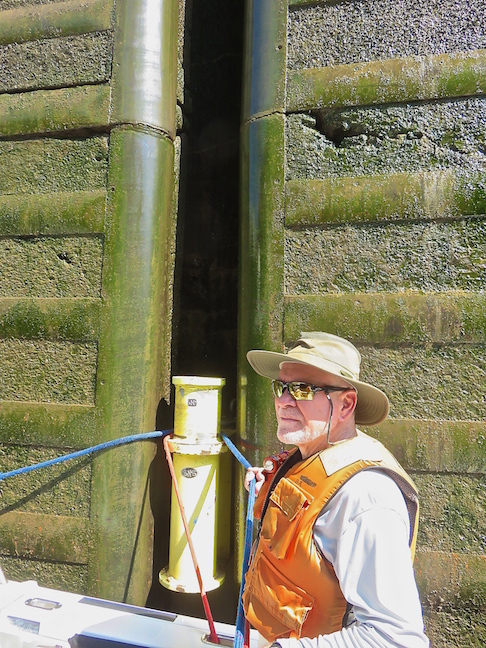
A line is passed from forward and aft of the boat around a yellow, floating bollard. The lines are never tied to the bollard in case it gets stuck and doesn’t go up and down with the boat. Fenders are put out to prevent scraping the sides and protect the boat from those slimy walls.
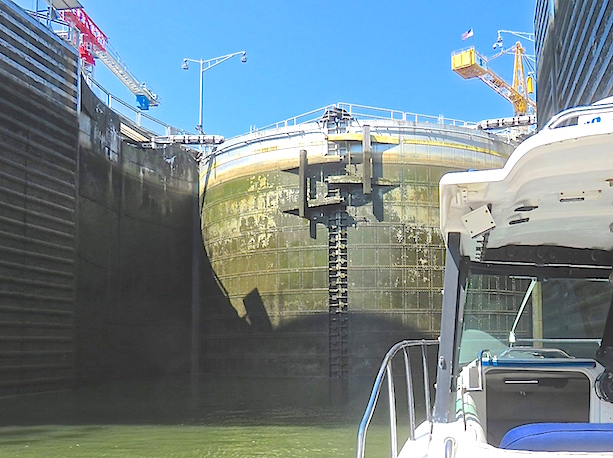
We were smoothly lowered 45 feet to the Tennessee River’s level inside the lock. A long horn sounded after the gate opened telling us to, “Get out.”

It’s 6.9 miles downriver from the dam to Chattanooga’s waterfront. The Bluff View Art District looks much grander from a boat.

Docking is allowed along Ross’s Landing, where we attend outdoor concerts in the terraced seats by the pier. To the left, is the Chattanooga Aquarium and AT&T Field, where the Lookouts play AA baseball, is atop a cliff, behind the trees with the tall lights. It’s an easy walk from here to the heart of downtown for dining, shopping, toddling and sightseeing.
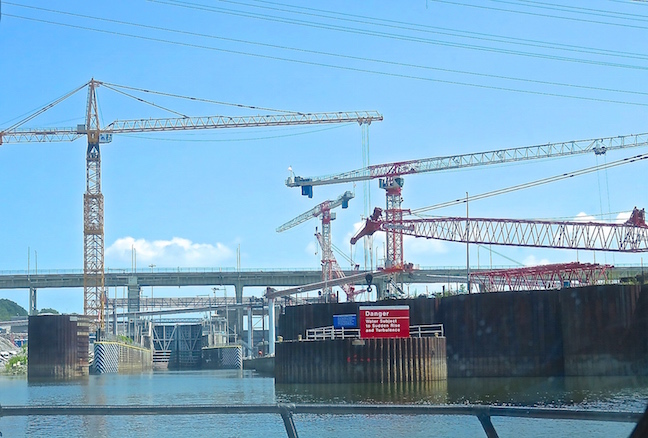
Headed back home, we called the Lock Operator on VHF channel 14 and were instructed to wait at the Railroad Bridge to avoid hanging out under the large cranes used in the construction of the new lock on the right. The lock’s entry on the west side is an imposing gauntlet.
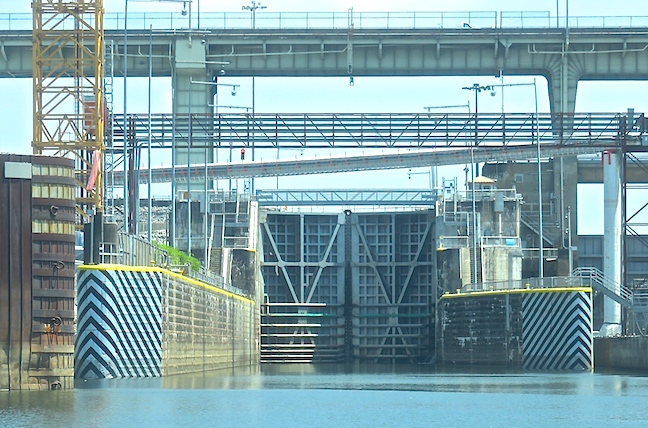
It was hard to see the traffic light that indicates lock status in the cluster of cranes and causeways. Red is stop and stay out of the entryway, yellow is prepare to enter, and green with a horn blast signals, “Come on in.”
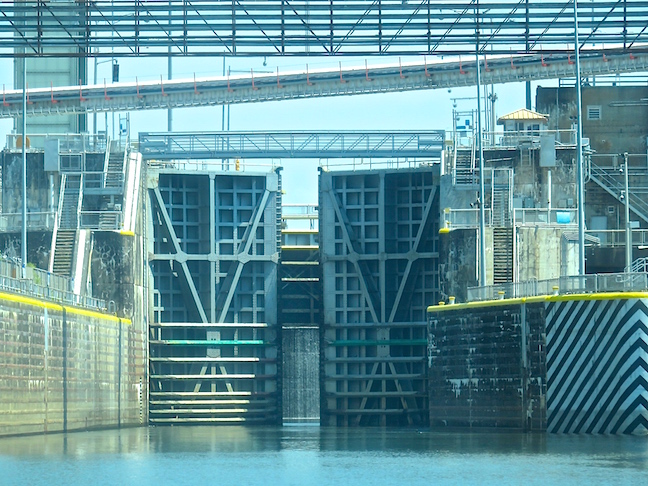
I find it creepier to enter the lock when the gates at the other end are holding back billions of gallons of lake water. Water falls constantly down the non-opening portion of the barrier below the opposite gates.

